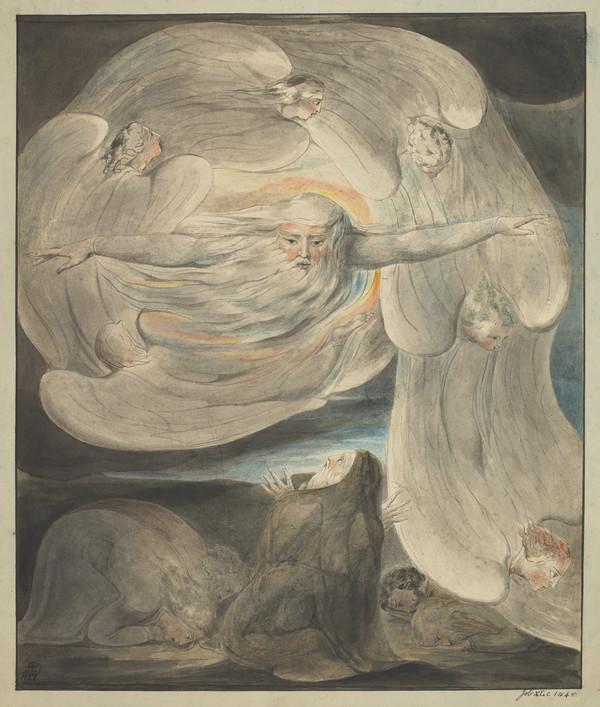The Night of Enitharmon's Joy (formerly called 'The Triple Hecate')
About this artwork
The subject of this coloured print has been the topic of extensive debate, with numerous plausible explanations. Suggestions as to the identity of the sitting woman range from Hecate, Jealousy, Media and Enitharmon. The most convincing of these has been that the figure represents Enitharmon, a female character who appears in a number of Blake’s mythological books. There are two other copies of this print, one in the Tate, London and the other in the Huntington Library and Art Gallery, San Marino. None of the three prints are dated, but the Tate’s copy is watermarked 1794, and on stylistic ground it is reasonable to accept a date of around 1795.
Updated before 2020
-
artist:William Blake (1757 - 1827) English
-
title:The Night of Enitharmon's Joy (formerly called 'The Triple Hecate')
-
date created:About 1795
-
materials:Polytype on paper
-
measurements:41.60 x 56.10 cm (framed: 76.50 x 96.50 cm)
-
object type:
-
credit line:Presented by the Royal Scottish Academy 1910
-
accession number:P 7851
-
gallery:
-
subject:
-
glossary:
William Blake
William Blake
Blake's vivid paintings and prints illustrate his originality as an artist, poet and mystic philosopher. His early apprenticeship with the engraver James Basire introduced him to a wide range of art works through prints. Blake was fascinated by Michelangelo's figures and also by medieval Gothic art...







